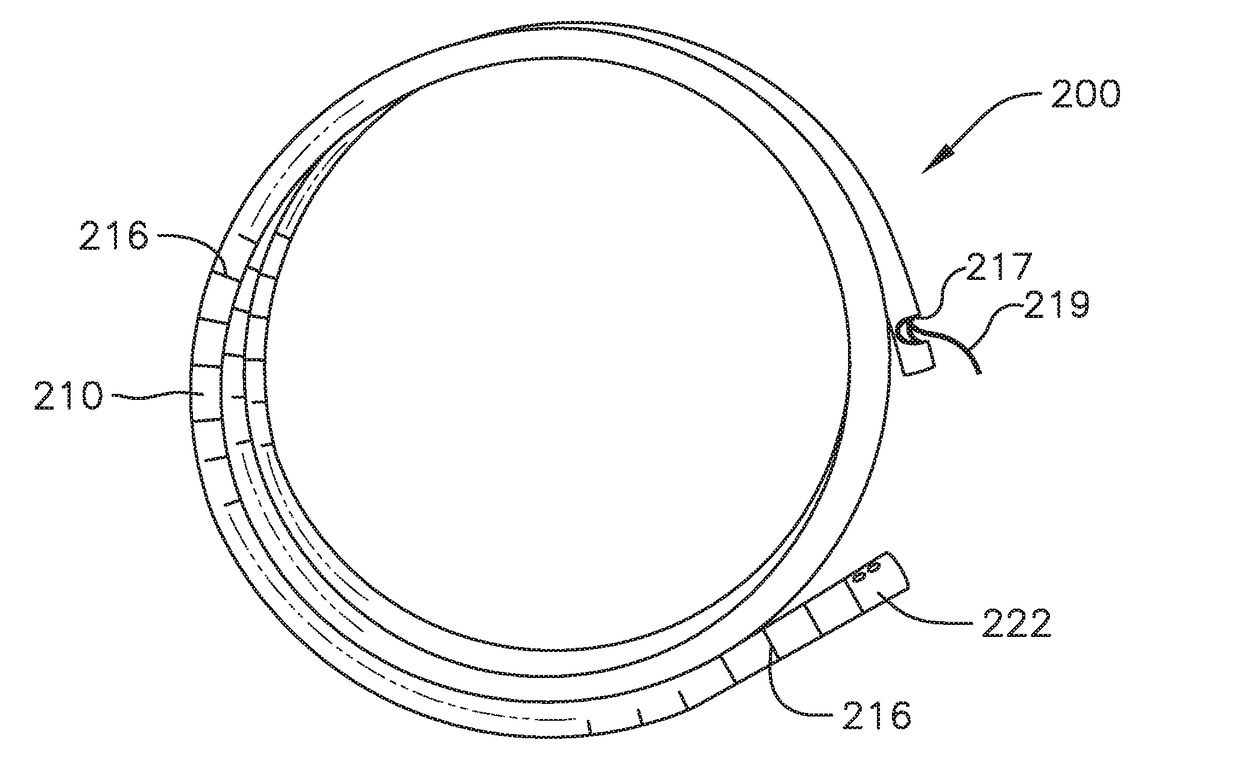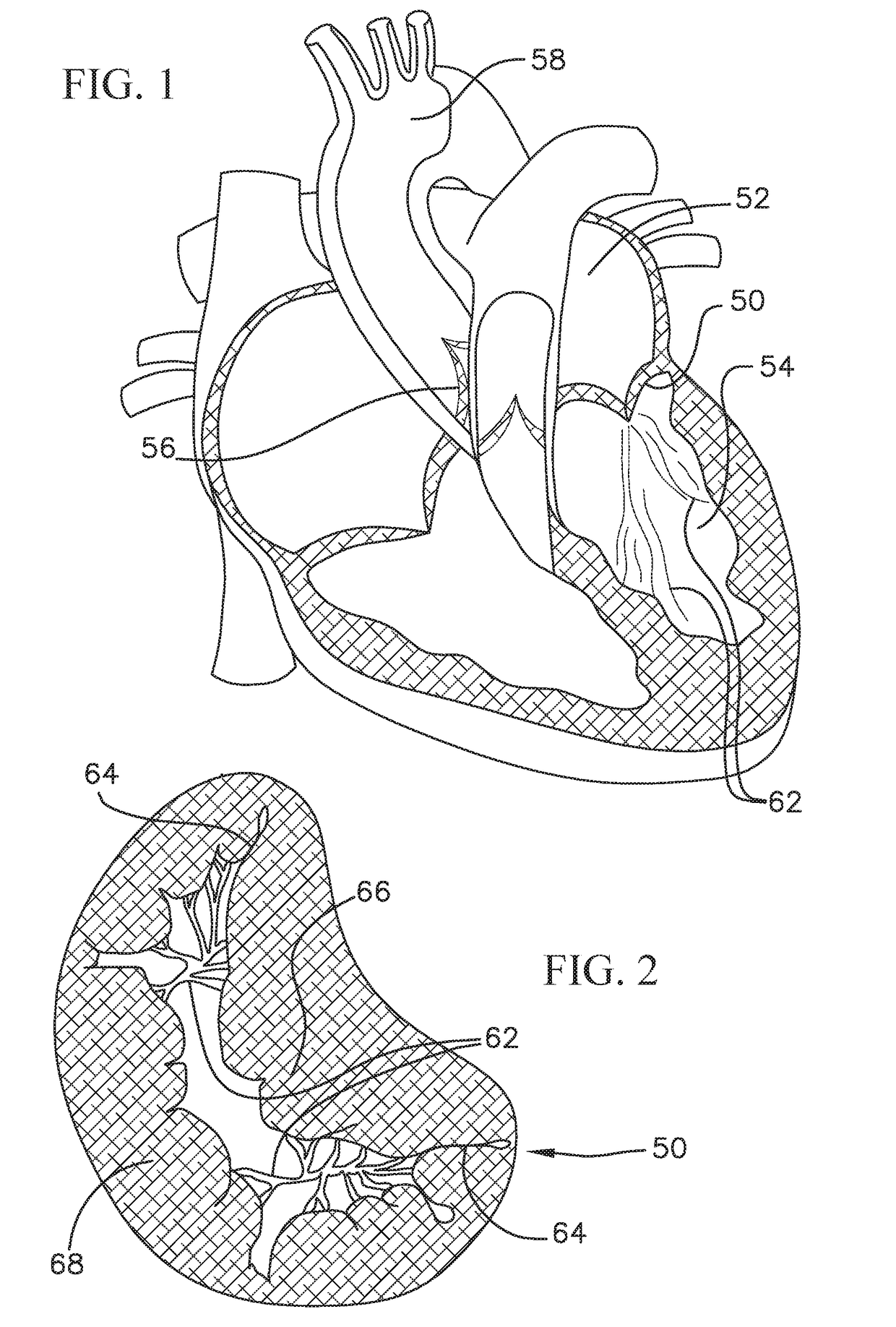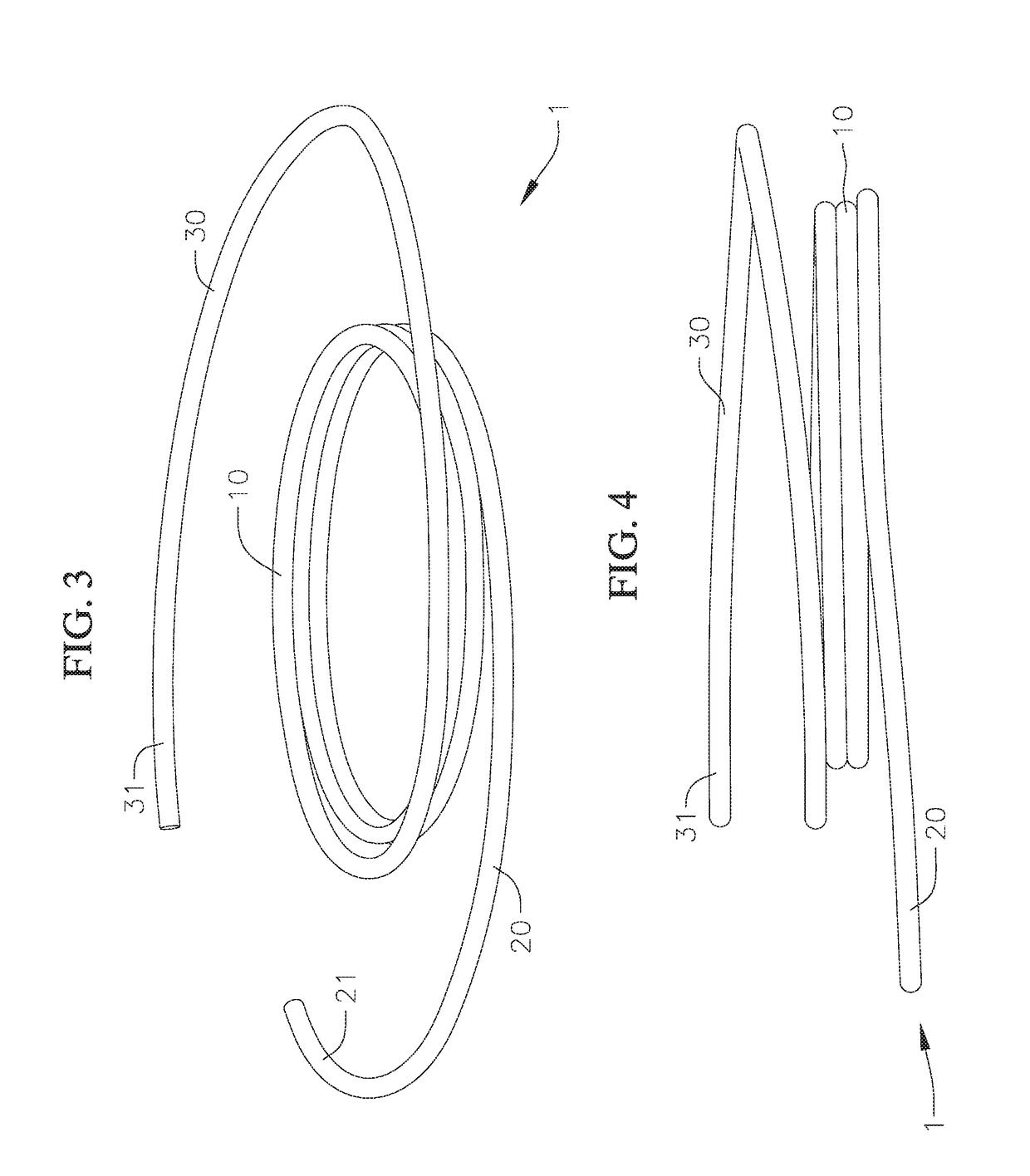Heart valve docking coils and systems
a technology of heart valve and coil, which is applied in the field of heart valve replacement and prosthetic heart valves, can solve the problems of fatal heart failure, mitral valve replacement is the size and shape of the native mitral annulus, and prolapse or eversion of the leaflets of the mitral valve back into the atrium, and achieves stable base or site, the effect of more robust way
- Summary
- Abstract
- Description
- Claims
- Application Information
AI Technical Summary
Benefits of technology
Problems solved by technology
Method used
Image
Examples
Embodiment Construction
[0054]Disclosed herein are various coiled anchoring or docking devices, which can be used in conjunction with expandable transcatheter heart valves (THV) at a native valve annulus (e.g., mitral or tricuspid valve annulus), in order to more securely implant and hold the prosthetic valve at the implant site. Anchoring / docking devices according to embodiments of the invention provide or form a more circular and / or stable annulus at the implant site, in which prosthetic valves having circular or cylindrically-shaped valve frames or stents can be expanded or otherwise implanted. In addition to providing an anchoring site for the prosthetic valve, the anchoring / docking devices can be sized and shaped to cinch or draw the native valve (e.g., mitral, tricuspid, etc.) anatomy radially inwards. In this manner, one of the main causes of valve regurgitation (e.g., functional mitral regurgitation), specifically enlargement of the heart (e.g., left ventricle) and / or valve annulus, and consequent ...
PUM
 Login to View More
Login to View More Abstract
Description
Claims
Application Information
 Login to View More
Login to View More - R&D
- Intellectual Property
- Life Sciences
- Materials
- Tech Scout
- Unparalleled Data Quality
- Higher Quality Content
- 60% Fewer Hallucinations
Browse by: Latest US Patents, China's latest patents, Technical Efficacy Thesaurus, Application Domain, Technology Topic, Popular Technical Reports.
© 2025 PatSnap. All rights reserved.Legal|Privacy policy|Modern Slavery Act Transparency Statement|Sitemap|About US| Contact US: help@patsnap.com



